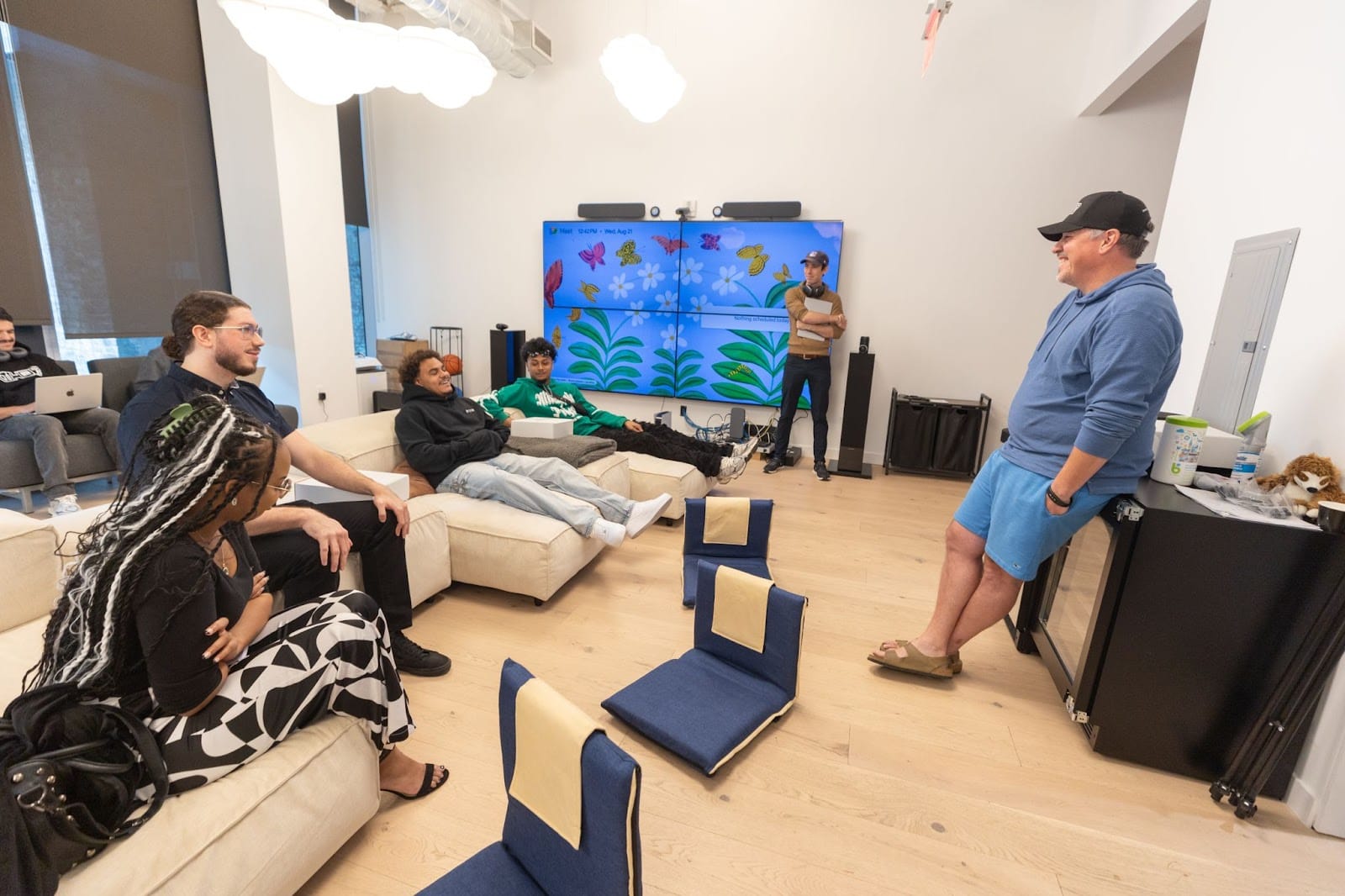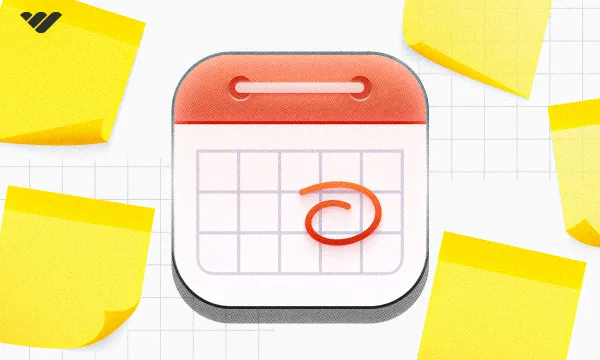Do you know how sometimes, you're browsing a website or using an app and it just feels borderline annoying? Things aren't where they should be; you can't find what you need; the design is an eyesore…
Now, compare that experience to using an app that just works. It's seamless, easy to navigate, and a pleasure to use. Better, right? The reason why some apps and websites work better than others is rooted in user experience (UX), and it all starts with research.
Learn more about our UX process with Cammie Shibata, Whop's UX Researcher. Below, we'll talk about how UX research works, where it started, what we're doing to make Whop even better, and how you can get involved to help shape Whop to fit your needs.
What is UX research?
The term "user experience research" refers to the process of understanding how users interact with a product. This includes:
- user behaviors
- needs
- motivations
- requirements
- challenges and difficulties
User experience research plays a major part in designing and updating all sorts of products, digital and physical. Putting the user at the center of the design process is what makes these products a pleasure to use.
What does a UX researcher really do, though, and how can they make your experience better? We had a chat with Cammie Shibata to find out more about her job at Whop and how research is improving every step of the user journey.
"As a researcher, I collect data on how people are using our product. At Whop specifically, I focus on talking to creators and seeing how they use their product and we test new designs with them."
There are a lot of different elements that make up UX research. Here are some of the different techniques researchers use:
- A/B testing: This means comparing two different versions of a feature or a product and then sending them separately to different groups of people. It's huge not just in UX research, but also in things like email marketing.
- Tree testing: This strips the app or website down to its bare bones and asks the users to complete certain tasks without the visual elements to aid them.
- Usability testing: A really helpful UX technique. This involves observing people while they use the product and gives you a very organic look at how they respond to it.
- Focus groups: This is like a mastermind but for UX purposes! Basically, a small group of users get to test the new product or feature and then discuss it with each other.
- User interviews: An essential aspect of Cammie's work. Interviewing users really lets you get into the nitty-gritty of what works and what doesn't.
- Surveys: Pretty self-explanatory, but so, so crucial in UX research.
- Five-second testing: The rule of first impressions is always alive, so this technique involves showing people the product for a very, very short time and letting them tell you what they think.
What do all of these different techniques have in mind? They're centered around people and their impressions.
Working with end users—meaning the creators first, and their customers second—is essential in building a seamless user experience. In the process of building a product, it's easy to get wrapped up in the work and overlook things that might not feel so smooth to a person who's not as familiar with it all. UX researchers are the bridge between a team of engineers and the end user, making sure everything works well on both sides.
One of the most important rules of UX research is that nothing is too obvious or foundational to discuss and clarify. Cammie says:
"We ask really foundational questions about how and why creators use our product. Then we take those insights and synthesize them to create stories we can tell to the product team to guide the development process."
Leaving no question unasked is an essential part of creating a product that's designed by experts but accessible to beginners. Sometimes, it's extremely difficult for professionals to anticipate what a user might struggle with, so the only way to ensure you've covered all the bases is to ask them.
But as Cammie points out: "Our main goal is to build user empathy. Product builders like engineers aren't talking to creators every day," so it's the UX researcher's job to fill that role.
She continues, "We help engineers to understand the mental models, the way that a creator is behaving and walking through the day. This knowledge means that when they build something, they're going to build the best optimal experience for the user."
Where did UX research come from?
If you're familiar with UX, you've probably heard of the Nielsen Norman Group. Cofounded by Don Norman, the man who coined the term "user experience" back in 1993, the company is made up of UX experts who teach the next generation of researchers and designers.
In truth, however, the field of UX existed before the term was coined. Jakob Nielsen (the other half of the Nielsen Norman Group) attributes one of the first real examples of UX work to Bell Labs in 1945 when it hired a psychologist to help design telephone systems.
The work of this psychologist, named John E. Karlin, culminated in the touch-tone keypad—and we all know that was designed well because we still use it both in physical and digital form today. Karlin decided the best way to arrange the numbers, the best shape for the keypad, and where to put additional keys like the "*" and "#."
His research showed that users made fewer mistakes on keypads that started with lower digits in the top left corner, so that's what he went with. This is precisely the kind of design decision that you can't make without UX research—because it's not a conclusion we can reach just by thinking about it.
The PC revolution of the 1980s and the web revolution of the 1990s and 2000s played large roles in the growth of UX as an industry. At the very beginning, new technologies were made by experts to be used by experts, so there wasn't an essential need for simple and high-quality user interfaces.
But as consumers started getting their hands on computers, success became tied to usability and how easily customers could get value from the product they had bought. By the time the internet rolled around, tech companies needed to think about UX from start to finish—from how easy their website was to interact with to how easy their product was to buy and use.
Around the year 2000, UX started getting a lot of press coverage, bringing the industry into the spotlight. Newspapers interviewed the leading experts in the field and the world became more aware of UX and its advantages. From 1983 to 2017, the UX profession grew from around 1,000 people to around 1,000,000—that's a growth factor of 1,000.
The Nielsen Norman Group expects further growth from here, with the number of UX professionals predicted to grow from one million people to 100 million people by 2050.
The importance of UX research when creating a product
The danger of making a product without any UX research is that you can end up with something that no one really wants, that no one enjoys using, and that no one gets value from. So if research is that important, at what point in the development process should it start?
Cammie points out "You should actually be doing research before the product is even built. You want to have a strategic understanding of what users are trying to do. This way, you can learn about what problems people have and build a product that actually solves them."

All product ideas start off small and simple—but when you add UX research into the mix from the get-go, the needs and wants of the user can shape the foundational design of the product. Research results that go against common assumptions can be used to push development in the right direction, focusing on the objective needs of the user, rather than what the product team believes the user should need.
And the research doesn't stop there. Cammie described this next part as such: "What you're going to do next is keep doing research while you're building and developing the product to make sure it really works. This is usually called usability testing—we test to see if the UI works and is visually understandable, and if the person can use the product from start to finish without anything breaking."
In other words, initial research may have revealed the problems you need to solve with your product and shed light on how to do it, but you won't know if you're actually on track unless you continue researching and testing.
Getting the core functionality down is what's most important at first. Does the product work? Can the intended audience successfully use it? Does it solve the problem?
"And after that, you're going to do even more research so you can improve the product, iterate on it, and make the experience even better. During this stage, you'll also start looking to the future and ask some big questions—where is this product going? What are the new trends? How will we grow from here on out?"
At Whop, research and improvement are a permanent part of our process. We consistently collect UX insights by talking to our users. This helps us create new apps to add to your whop hub, including things like the Video Calls app or the Whop Wheel.
How user research is shaping the future of Whop

Whop's main goal is to support and enable people everywhere to find success selling digital products—and through our research, we've found that creators want to see examples of that success.
"We're building around user stories," said Cammie. "When creators come to our website, they want to see the stories and insights of people who have succeeded before them. They want to see pictures, measures of success, and actionable advice about how they can follow in the footsteps of these successful creators."
In other words, the most pressing thing potential creators need when they visit our homepage is proof. They want to see that people like them can find success using our product, that people are joining us and making money, and that people are having a positive experience.
"And so, when we were building the new homepage, we gave potential creators what they wanted. As soon as you hit the website, you should see a successful creator showcasing what they're doing and how they were able to do it, and it should inspire you to build your own business."
At Whop, we believe that everyone should be able to make the most of their skills and take charge of their own earning potential. That's why running a side business or even a full-time business with Whop has to be an intuitive experience.
Our entire user journey is built to be easy to follow and navigate, with all the necessary tools for growth right at the user's fingertips. Every minute we can shave off the navigation process or the learning curve translates to more time users can spend growing their business and working towards success. UX research plays a huge part in that.
Want to get involved with user research? Here's how:
We believe that more UX research means better products, so we're always on the lookout for more people who can contribute to our research efforts. If you're interested, keep reading to find out more information.
Who can join the Whop user research Panel?
As Cammie puts it: "All you have to do is be on Whop, right?"
And that's about the gist of it. If you're part of the Whop community and selling or getting ready to sell digital products with us, then we want to talk to you. Everything about your unique experience with us can help inform future decisions—from how you found us and how easy it was to sign up to things you find confusing or want us to change.
It's not just current users, however. Cammie says: "We do also talk to creators and users who aren't using Whop yet but might be interested. If you're one of these people, what you would do is just sign up on our blog or on our site to participate in research. You'd answer a couple of questions and then we can invite you for a chat."
We can talk about new apps you want to see, what kinds of analytics you want us to show you, and extra payment methods you want us to add—the list is literally infinite. UX research is all about the details, so even a comment about the way our menus are structured or the way we phrase a certain explanation can help us improve.
You can sign up on our blog or on our website to participate in research and then we'll set up a chat with Cammie or one of our other researchers. "You'll get a sneak peek at the new products we're developing, and we can pass your feedback on to the product team."
What do you need to participate?
Natural communication is an important part of UX research—the goal is to really get to know our user base, so Cammie would love it if you had access to a device you can use to join video calls with both a camera and a microphone.
She says "It's really important to be able to talk to people and interact with them as directly as possible, to see their face and see their reactions.
And, if you're near the New York office, you could actually come to visit us and we can talk to you in person."
What incentives are there?
The first incentive is that by helping us make a better product, you'll get to enjoy the improvements yourself! But it's about more than that—we value your time and your feedback, so we do provide thank-you gifts for the time you've spent with us.
Your decision to provide data and feedback allows us to grow as a company and a product, so we've got gifts for anyone who takes the time to chat with us.
Join the Whop user research panel
The more we can improve Whop, the more successful our users can become—and that's why we want you to participate in our UX research. From speeding up the onboarding process and making menus more intuitive to expanding our range of apps and growth tools, we want to make Whop better for you.
Whether you've been on our platform for a while or you're only just now considering signing up, every kind of user experience is important. Even if you can't think of any specific opinions you want to share, observing your interactions with our product will help us learn and grow.
Participating is easy. All you need to do is chat with our UX researchers about Whop or take part in our various kinds of tests. Thank-you goodies await!
Whop's goal is to be the go-to platform for anyone who wants to take charge and control their life and their income in a meaningful and flexible way. Help us make Whop even better and sign up for the user research panel today!




